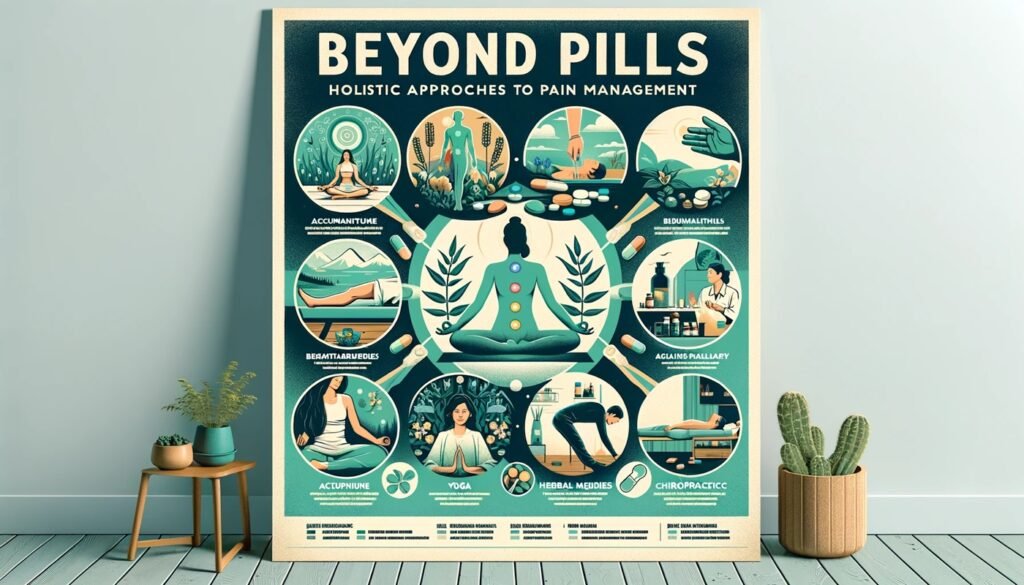
Pain is a complex experience that affects millions of people worldwide. While medications are often prescribed for pain relief, they may come with side effects and risks of addiction. As a result, many are turning to holistic approaches that address pain through physical, emotional, and psychological therapies. This article explores various holistic methods for managing pain, providing a comprehensive guide to non-pharmacological pain relief strategies.
Understanding Holistic Pain Management
Holistic pain management involves treating all aspects of the individual—not just the physical symptoms but also considering emotional and environmental factors. The goal is to empower individuals to manage their pain through a variety of non-medicinal methods, potentially reducing their reliance on pharmaceuticals.
Effective Holistic Pain Management Techniques
- Acupuncture
- Overview: An ancient Chinese medicine technique involving the insertion of needles into specific points on the body to stimulate nerves, muscles, and connective tissue.
- Benefits: Can help relieve pain by releasing endorphins, the body’s natural pain-relieving chemicals, and by improving blood flow.
- Chiropractic Care
- Overview: Focuses on disorders of the musculoskeletal system and the nervous system, and the effects of these disorders on general health.
- Benefits: Adjustments and manipulations of the spine and other parts of the body can improve spinal function and alleviate stress on the nervous system, helping to reduce pain.
- Massage Therapy
- Overview: Manipulation of the body’s soft tissues to relieve pain and tension.
- Benefits: Helps reduce muscle tension, improve circulation, and increase endorphin levels, which are natural mood lifters and pain relievers.
- Yoga and Tai Chi
- Overview: These practices combine physical postures, breathing exercises, meditation, and a distinct philosophy.
- Benefits: Enhances flexibility, reduces stress, improves circulation, and strengthens the body, helping to manage pain and improve overall well-being.
- Herbal Remedies
- Overview: Use of plants or plant extracts to relieve various health problems.
- Benefits: Certain herbs like turmeric, ginger, and willow bark have anti-inflammatory properties that can help manage pain naturally.
- Mindfulness and Meditation
- Overview: Practices that involve focusing the mind on the present moment without judgment.
- Benefits: Can alter the brain’s response to pain, reduce stress and anxiety, and enhance coping mechanisms for chronic pain.
- Nutritional Adjustments
- Overview: Modifying the diet to reduce inflammation and improve health.
- Benefits: Foods high in antioxidants, healthy fats, and low in processed ingredients can help reduce inflammation and support pain relief.
Conclusion
Holistic approaches offer valuable alternatives to traditional pain management methods, often with fewer side effects and long-term health benefits. By integrating these practices into your life, you may find effective ways to manage pain and enhance your overall health and quality of life.
FAQs about Holistic Pain Management
Q: How quickly can I expect results from holistic pain management?
A: Results vary depending on the method and individual factors. Some people experience relief immediately, while others may notice improvements over weeks or months.
Q: Are holistic methods safe to combine with medications?
A: Many holistic approaches can be safely combined with medications, but it’s important to consult with healthcare providers to avoid any potential interactions.
Q: Can holistic methods completely replace medications?
A: While holistic methods can significantly reduce the need for medications, they may not replace them entirely for everyone. It’s important to have a personalized approach based on medical advice.
Q: Are there any risks associated with holistic pain management?
A: Most holistic approaches are low-risk, but it’s crucial to perform them under the guidance of certified professionals, especially for therapies like acupuncture and chiropractic care.